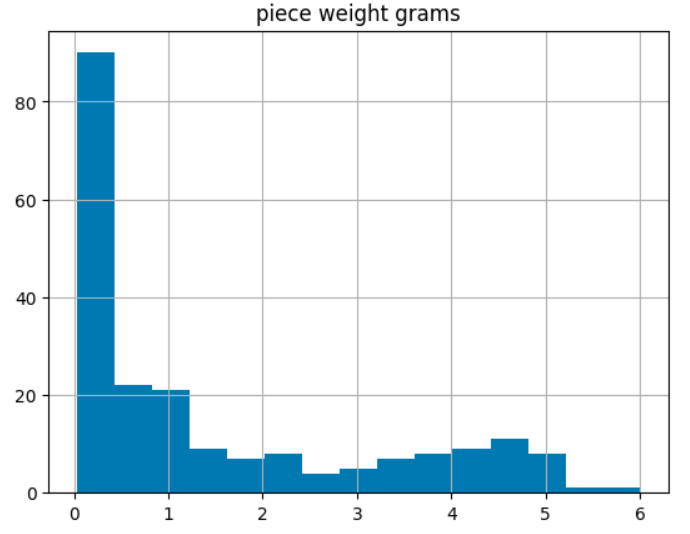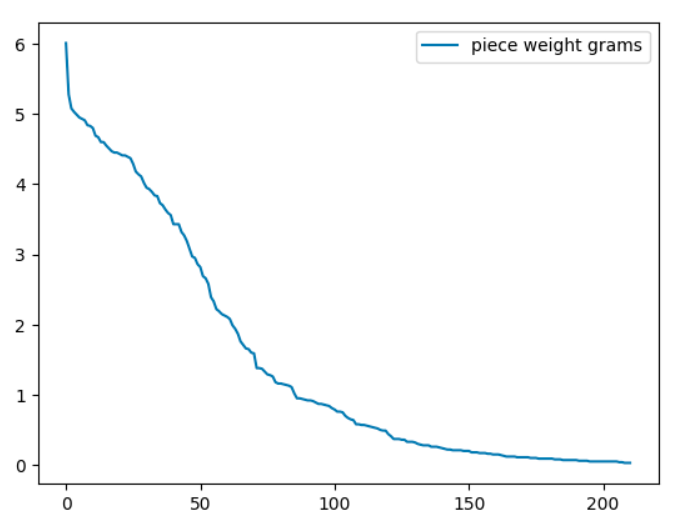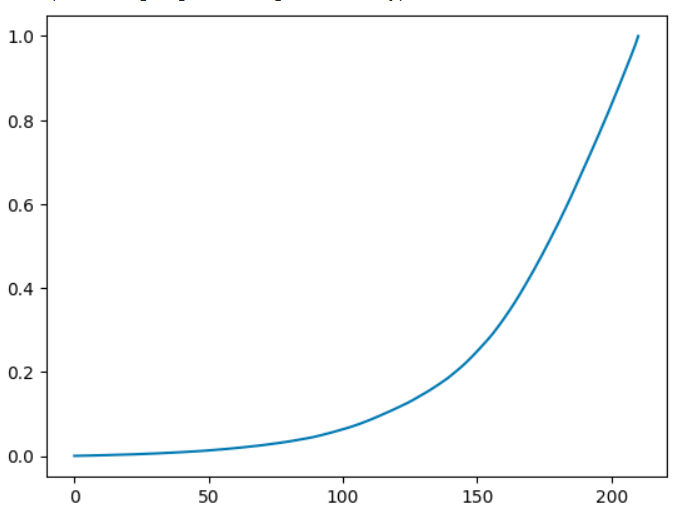I like corn tortilla chips. Especially the kind covered in a salty dust like Doritos or Fritos. They are super common all over the United States – you can find them in just about every grocery store and gas station. I think my favorite type are Tostitos ‘Hint of Lime’. Where Doritos have more of a shocking and youthful brand, ‘hint of lime’ is for ‘adults’. Where Doritos are ‘firey’ or ‘cheesier’, tostitos offer a only a restrained, even refined ‘hint’ of something.
Regardless of what branding and label graces the bag the chip distributor has a problem. The chips are deliciously brittle and if they are jostled too much en route to the customer what start as wedges of tortillas will be reduced to a dusty crumbles.
When I buy a bag I am thinking about the big bite sized chips that carry the most dip and the most salty seasoning but there never seem to be enough.
Well, how many are there? How much of the bag can respectably be said to be chips and not dust? Is more of the bag crushed up corn meal or full sized chips?
It seems like an easy if tedious question to study – just measure every chip. Then you could look at the distribution and get an idea of what to expect in a ‘typical’ bag.
Sources of Variation
What could affect how crushed up the chips inside a bag are? At first I was just thinking about the value and that the ‘greedy’ chip makers are just trying to pull a fast one on us consumers, but really the chip makers don’t gain much by shipping smashed chips around the world. Shipping and ‘handling’ has to be the principle source of chip damage and fragmentation. Retail store where the bags of chips are finally sold for the last time don’t want to try to sell smashed chips either.
I finally decided to sit down and take the time to measure a bag of chips.
The first idea I had was just to measure the weight of each chip in a bag and get the distribution of weight by chip in the bag – and this is what I did. Right away a few additional metrics came to mind: area of the chip, volume of each chips and air in the bag, and seasoning metrics (how much seasoning is on each chip).
All that I could realistically measure was the weight of each chip – the other metrics will have to wait for later testing. It was tedious. Measuring each chip from a single one by one is quite slow. The scale I have is easy enough to use but has some obvious error very close to 0.00 grams. Also even though I only measured one bag of chips I still had to separately weigh 211 chip fragments. With my hunch that shipping and handling has the biggest effect of chips (reducing the maximum and mean size) it would be better to include a much larger sampling of chips from different distances from the shipping hub and some handled by different shippers to better identify trends.
Well I got on facetime with a friend and started weighing chips. Then I realized I had better first measure the weight of the whole bag and the weight of just the chips in the bag, and maybe just the bag itself (it always seems like you forget some important measurement until it’s too late to get it.

This is the weight of each fragment in the order I measured them. The biggest chip was 6.03g and was a complete, undamaged wedge of tortilla. You can also see that at the end I was mostly measuring fragmentary dust. As mentioned before, I feel like my scale was not fully accurate enough to precisely measure the smallest pieces. I lumped up all the pieces that didn’t register on the scale and there was about 2.51g of additional chip-waste.
Below is a histogram of the counts of fragments in different weight buckets. You can see there are tons and tons of tiny pieces (90+ under .5 grams) but there was a surprising number of heavier chips too clustered near 4.5g.

Below is a chart with each chip measurement from heaviest to lightest. You can see a steep near-linear decline from about 5g to about 1.4g and after that the fragment weights level out.

The below graph shows the cumulative sum from the lightest measurable fragment to the heftiest and the y axis is the total weight percent. The mean chip weight was 1.47g. about 82% of the total chips make up half of the weight.

Conclusion
The Tostitos I bought had way more complete and large chips in it than I expected. This study demands answers to more questions! Are these graphs dependent on the age of the bag? Do smaller chips break less? Which chips are the least fragmented? What about the total size of each chip?